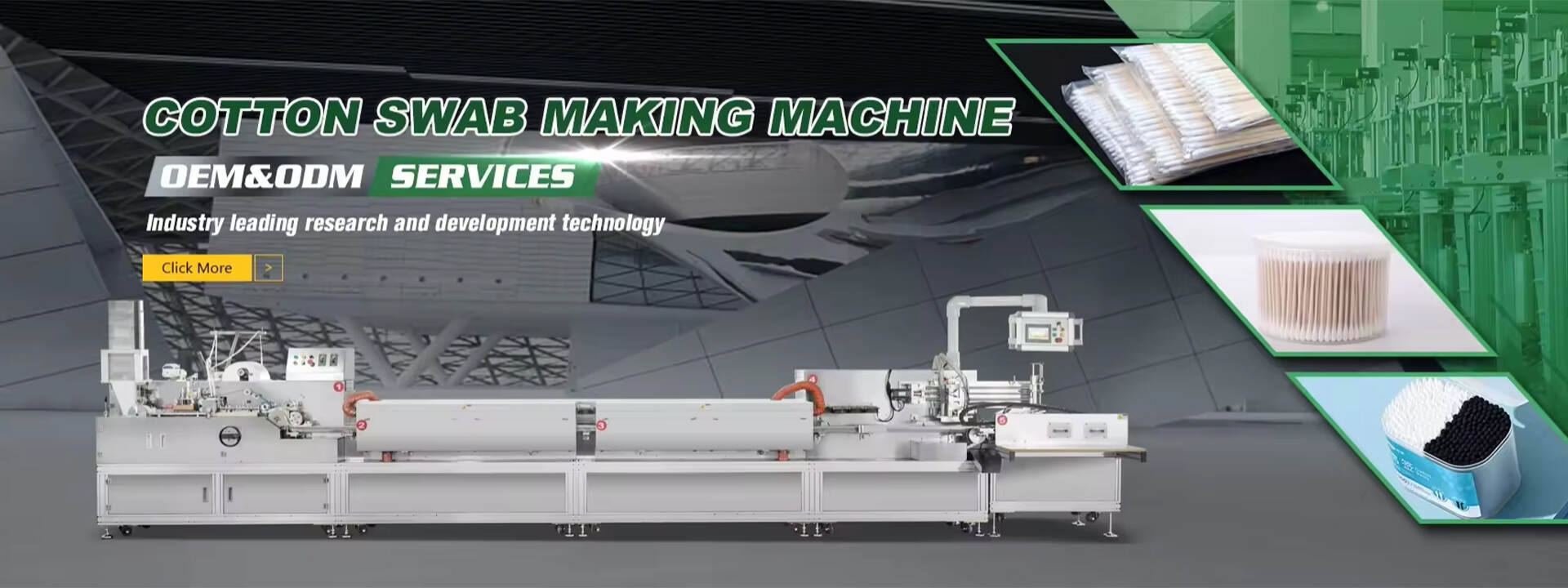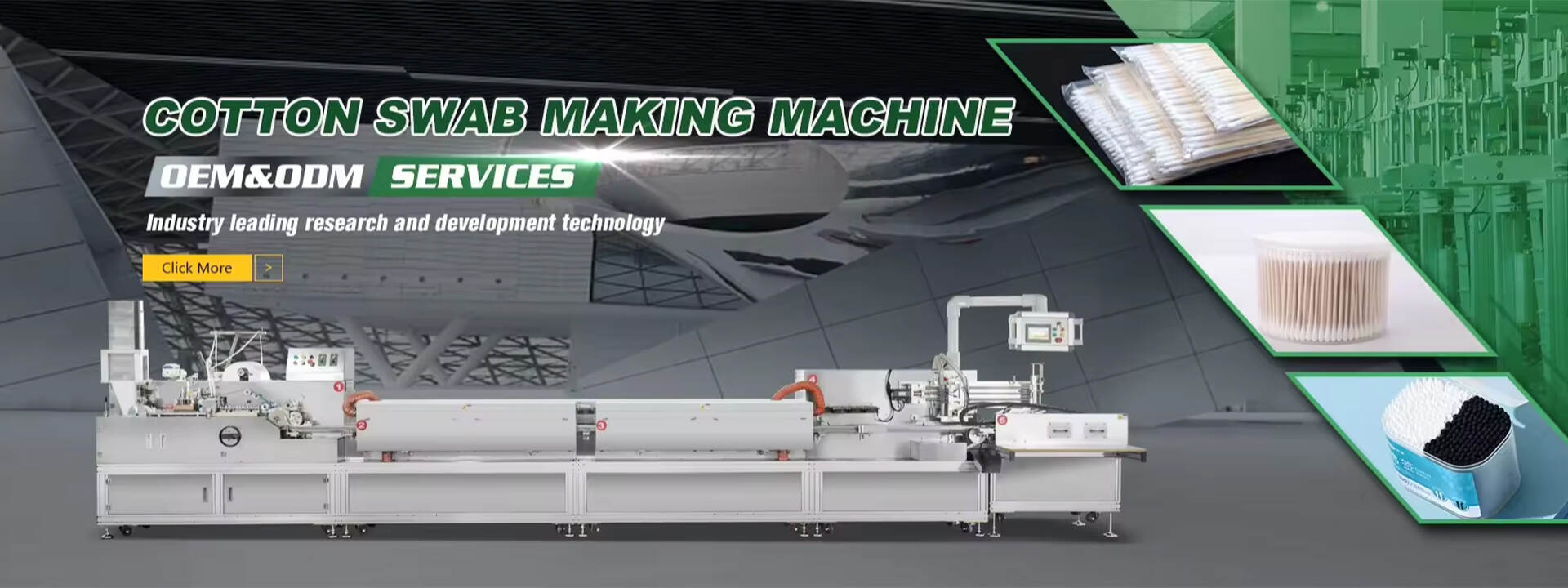Email format error
Email cannot be empty
Email already exists
6-20 characters(letters plus numbers only)
The password is inconsistent
Email format error
Email cannot be empty
Email does not exist
6-20 characters(letters plus numbers only)
The password is inconsistent


The Essential Guide to Cotton Swab Manufacturing Equipment
In the world of everyday hygiene products, few items are as common and essential as cotton swabs. These small yet versatile tools have been used for everything from personal care to household cleaning, and their popularity only continues to grow. But have you ever wondered how these tiny cotton swabs are made? The answer lies in the highly specialized equipment that powers their production. In this blog, we will take a deep dive into the world of cotton swab manufacturing equipment, exploring the processes, machines, and technology that ensure these tiny tools are produced efficiently and at high quality.
The Role of Cotton Swabs in Daily Life
Before we dive into the technical side of manufacturing, let's take a moment to appreciate the widespread use of cotton swabs. These little items are found in almost every household and are used for a variety of purposes. Whether it’s cleaning your ears, applying makeup, or even fixing small electronics, cotton swabs are incredibly versatile.
They are made from a central stick (usually plastic or paper) with cotton wrapped around both ends. It seems simple enough, right? But the process of manufacturing these swabs is much more complex than most people realize. The precision required to create cotton swabs that are consistent in quality and use is achieved through a series of advanced cotton swab manufacturing equipment.
The Process Behind Cotton Swab Manufacturing
The manufacturing of cotton swabs involves several steps, each requiring specialized machinery to ensure that the final product is both safe and functional. Let’s break down the key stages in cotton swab production and look at the machinery involved at each step.
1. Cotton Fiber Preparation
Cotton swabs, as the name suggests, are primarily made of cotton. The first step in the manufacturing process is preparing the cotton fiber. The cotton is cleaned, separated, and processed to remove impurities. This is done using machines known as cotton processing equipment. These machines ensure that only the softest and purest cotton fibers make their way to the production line, which is critical for the quality of the final product.
The cotton is then formed into a fluffy, lightweight form and is prepared for wrapping around the swab's stick. This stage often involves machines that can fluff and stretch the cotton into the desired texture before it is transferred to the next step.
2. Stick Production
The next component in cotton swab production is the stick itself. Cotton swabs typically have sticks made of plastic, paper, or sometimes even bamboo. These sticks are created using stick manufacturing equipment, which shapes the raw material into thin, uniform sticks of the correct length.
For plastic sticks, a process called extrusion is used. The plastic is heated until it is malleable, then forced through a mold to form long, straight rods. For paper sticks, a similar process is used, but with paper pulp instead of plastic. The stick manufacturing equipment is critical for ensuring that the sticks are sturdy and smooth, without any defects that could affect the cotton swab’s quality.
3. Cotton Wrapping
Once the cotton is prepared, and the sticks are ready, the cotton needs to be wrapped around both ends of each stick. This is done using specialized machines that carefully wrap the cotton around the ends of the stick. These machines, often referred to as "cotton wrapping equipment," use precise mechanical arms to ensure that the cotton is evenly distributed and securely attached to the stick.
Some advanced cotton swab manufacturing equipment has automated systems that ensure each cotton swab is made with consistent cotton density, which contributes to the overall quality and reliability of the product. The cotton must be wrapped tightly enough to stay in place during use but not so tightly that it becomes uncomfortable to the user.
4. Cutting and Shaping
After the cotton is securely wrapped around the stick, the swabs are cut to the proper length. This process is essential to ensure that each cotton swab is the right size for consumer use. Cutting machines are used to trim the cotton-wrapped ends to the desired length and shape. These machines are highly accurate and ensure that every cotton swab is uniform in size and appearance.
Additionally, these machines may also shape the cotton ends into a particular design, such as a rounded or pointed tip, depending on the intended use of the cotton swab. The shaping process is crucial because it affects how the swab performs for its various uses, such as cleaning or applying products.
5. Drying and Sterilizing
At this stage, the cotton swabs are usually subjected to a drying process. Moisture can affect the integrity of the cotton and may also lead to bacteria growth, so drying is an essential step. Some manufacturing processes include sterilization as well, ensuring that the cotton swabs are hygienic and safe for consumer use.
Sterilization equipment plays an important role here, and there are several methods used, including heat sterilization or chemical sterilization, depending on the manufacturing guidelines and standards. The sterilization equipment ensures that the cotton swabs are free from any potential contaminants, which is particularly important for medical or cosmetic applications.
6. Packaging
Once the cotton swabs are completed, they are packaged for sale. Automated packaging equipment is used to count the cotton swabs, place them in containers (such as boxes or plastic packages), and seal them. Packaging plays a vital role in preserving the quality of the swabs and ensuring that they reach consumers in pristine condition.
The packaging equipment used in this stage often includes automatic sealing machines, labeling machines, and cartoning machines. These machines ensure that the cotton swabs are securely packaged, with clear labeling and the proper information, making the final product both appealing and functional for consumers.、

The Impact of Technology on Cotton Swab Manufacturing
With the rise of automation and advanced technology, cotton swab manufacturing has become more efficient and precise than ever before. Modern cotton swab manufacturing equipment is equipped with sensors and controls that monitor every aspect of the production process, ensuring that the swabs meet the highest standards.
For example, advanced wrapping machines use computer-controlled systems to adjust the tightness of the cotton wrapping automatically, while cutting machines use lasers or high-precision tools to make clean cuts. These technologies not only increase efficiency but also minimize waste and reduce the likelihood of errors during production.
Moreover, the use of robotics in cotton swab manufacturing has helped to streamline the process. Robots can assist in handling raw materials, transporting swabs between production stages, and even packaging the final product. This helps manufacturers maintain a high level of consistency and speed, ensuring that cotton swabs are produced in large quantities without sacrificing quality.
Sustainability in Cotton Swab Manufacturing
As the demand for cotton swabs continues to grow, there is increasing attention on the environmental impact of their production. Many companies are now focused on using sustainable materials and reducing waste throughout the manufacturing process.
For example, some manufacturers are transitioning to paper sticks made from recycled materials, while others are exploring alternatives to plastic. In addition, manufacturers are investing in energy-efficient cotton swab manufacturing equipment to reduce their carbon footprint and minimize environmental impact.
Cotton swabs are often single-use items, and there has been a growing concern about their contribution to plastic waste, especially in the case of plastic-sticked swabs. However, innovations in eco-friendly cotton swab manufacturing equipment have led to the creation of biodegradable and recyclable alternatives that help reduce environmental harm.
Conclusion
The process of manufacturing cotton swabs may seem simple on the surface, but it is in fact a highly specialized and intricate process that requires advanced cotton swab manufacturing equipment. From cotton processing and stick production to wrapping, cutting, and packaging, each step in the process is crucial for producing a high-quality product that meets consumer expectations.
As technology continues to advance, the cotton swab manufacturing industry will no doubt see further improvements in efficiency, quality, and sustainability. Whether used for personal hygiene, beauty routines, or household cleaning, cotton swabs remain a staple in daily life, and the equipment that makes them is essential to keeping up with the ever-growing demand.
So, the next time you reach for a cotton swab, take a moment to appreciate the sophisticated machinery and technology behind its production!

